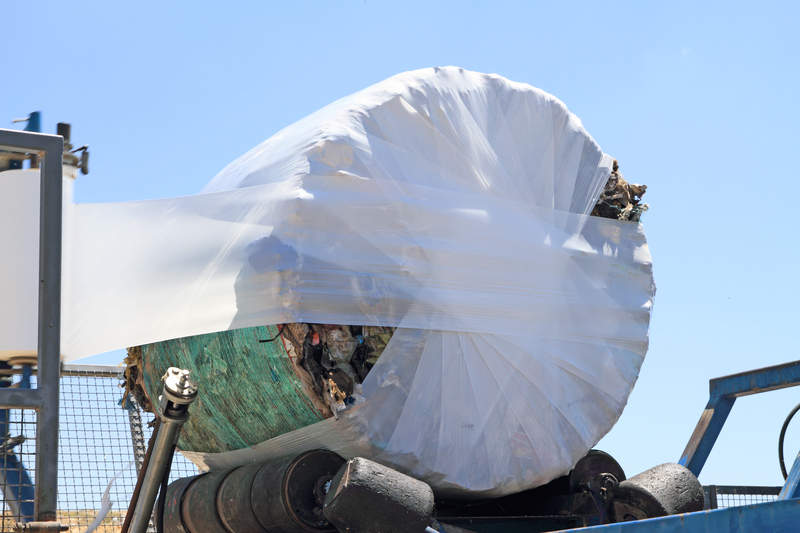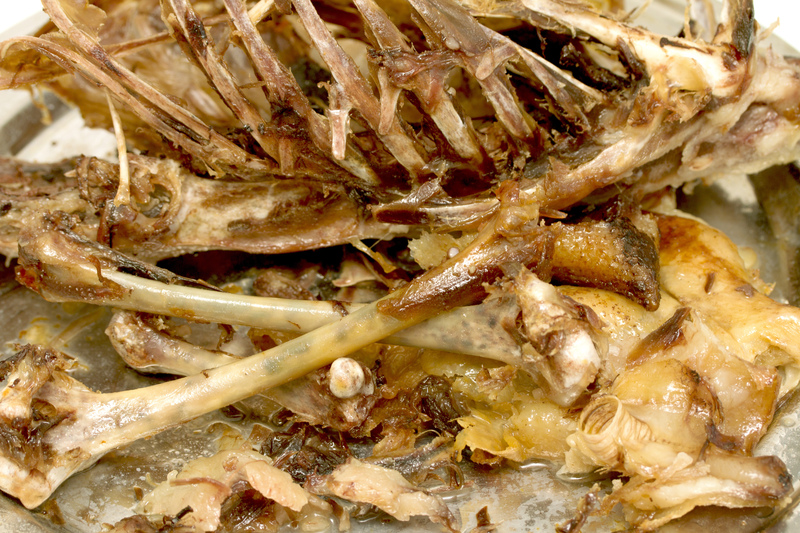Smart Solutions to Recycle or Dispose of Your Worn-Out Cookware
When your trusted pans, pots, and other kitchen tools have finally reached the end of their lifespan, what should you do? Knowing how to recycle or dispose of old cookware in an eco-responsible way can have a significant impact on the environment. In this comprehensive guide, we'll explore smart solutions to recycle or dispose of your worn-out cookware, highlight creative reuse ideas, and introduce you to sustainable approaches that go beyond simply throwing them in the trash.

Why Responsible Cookware Disposal Matters
The average household accumulates several pieces of cookware over time--stainless steel pots, non-stick pans, cast iron skillets, and more. With wear and tear, they eventually need to be replaced. But tossing them in the garbage contributes to landfill waste. Cookware is often made from valuable materials like metal, which can be recycled or reused. Understanding your options for recycling, donating, upcycling, or safely disposing of cookware helps conserve resources and reduces environmental impact.
Main Types of Cookware Materials and Their Recycling Challenges
Before diving into disposal solutions, let's look at the most common cookware materials and their recycling prospects:
- Stainless Steel: Durable and highly recyclable.
- Aluminum: Lightweight, conducts heat well, and is one of the most recycled metals globally.
- Cast Iron: Long-lasting and fully recyclable, but heavy and sometimes treated with coatings.
- Copper: Valuable, but often mixed with other metals, making recycling complex.
- Non-stick Cookware: Usually aluminum or steel with Teflon or ceramic coatings, which complicate recycling.
- Glass and Ceramic: Difficult to recycle, and usually can't go in your curbside recycling due to different melting points from standard glass.
Recycling Cookware: What Are Your Smart Options?
Not all cookware is accepted in standard curbside recycling programs due to the mix of materials or attached handles and coatings. However, several smart ways exist to recycle cookware responsibly:
1. Metal Scrap Yards
- Find your local scrap metal dealer: Most metal cookware recycling options begin with scrap yards. These places accept ferrous (magnetic) and non-ferrous metals--even if they are old or slightly rusty.
- Prepare your cookware: Remove non-metal parts such as plastic handles and glass lids if possible. The purer the metal, the more valuable it is to recyclers.
- Bring it in for drop-off: Scrap yards will weigh your items and might pay you a small amount, especially for valuable metals like copper, brass, or aluminum.
2. Municipal Recycling Centers
- Some recycling centers or community recycling events accept metal cookware, especially specialized drop-off locations for metals.
- Contact your city or county's public works department or check their website to learn about local options for properly disposing of cookware.
3. Manufacturer Take-Back Programs
Several cookware brands offer recycling programs for their own products. For example, Calphalon and TerraCycle have take-back initiatives whereby customers can send in their old pans or pots for proper recycling.
- Check with your cookware's manufacturer about available eco-friendly cookware disposal or trade-in programs.
- Look for details on their websites in the sustainability or customer service sections.
4. Scrap Drives and Community Waste Days
Occasionally, schools, fire departments, or community groups hold scrap metal drives. These are perfect for dropping off cookware that can be recycled but not through your regular bin.
5. Specialized Recycling Programs
Some areas have specialized recycling programs that accept challenging materials, like non-stick pans or ceramic cookware. These programs may partner with businesses or non-profits to handle materials that would otherwise go to landfill.
What to Do with Non-Recyclable Cookware?
Cookware with significant damage (warped, cracked, or broken) or made of materials not accepted locally may need other eco-friendly disposal methods. Here are alternative solutions for worn out cookware:
1. Donation if Usable
- If your cookware still functions, donate it to a local charity, thrift store, or shelter.
- Many organizations provide households in need with kitchen basics--even slightly worn cookware can help.
- Contact local charities to be sure they accept used kitchenware.
2. Creative Upcycling and Repurposing
Upcycling cookware is a fun and creative way to avoid landfill waste. Here's how you can reuse old pots and pans around your home or garden:
- Planters and patio decor: Drill small holes in the base to create quirky flower pots.
- Kitchen organizers: Use old muffin tins or baking trays for drawer organization or craft storage.
- Outdoor birdbaths or feeders: Larger or deeper pans make excellent DIY garden features.
- Wall art or clocks: Paint the surface and add a clock mechanism to transform worn cookware into unique wall pieces.
- Candle molds and trays: Metal molds are excellent for homemade candles or soap.
Let your creativity shine by turning old cookware into functional or decorative household items. Upcycling reduces waste and gives your kitchen tools new life!
3. Proper Landfill Disposal (as a Last Resort)
If recycling or reuse is not possible, the last resort is to place your worn-out cookware in the trash. Before doing so, check with your local waste service to see if they have a bulky items or scrap metal collection day. Some areas require these items to be placed at curbside separately or dropped off at special locations.
How to Choose Eco-Friendly Cookware Disposal Methods
To select the best method for disposing of your used pots and pans, consider the following steps:
- Analyze cookware material: Identify if it's metal, ceramic, glass, or a combination.
- Check condition: Is it still usable, or is it too damaged?
- Research local options: Look up nearby scrap yards, recycling centers, or upcycling organizations.
- Contact manufacturers: See if they offer take-back or recycling programs.
- Try upcycling: Can you or someone else repurpose it?
- Dispose responsibly: As a last resort, follow local rules for trashing bulky or metal items.
FAQs About Recycling and Disposing of Worn-Out Cookware
Can I put old pots and pans in my household recycling bin?
Generally, most household recycling programs don't accept cookware due to size, coatings, or mixed materials. Metal parts may jam recycling equipment. Instead, opt for scrap metal facilities or special recycling days.
How do I recycle pots and pans with plastic handles?
Remove handles if possible. Scrap yards usually prefer clean metal. If the handle is not removable, mention it when contacting the facility as they may have specific instructions.
Are non-stick pans recyclable?
Non-stick pans with Teflon coating are a recycling challenge. Teflon (PTFE) does not recycle easily and most recycling centers won't accept coated cookware. Some brands and specialty recyclers will accept and safely process non-stick items--always check first.
Is there an eco-friendly way to dispose of ceramic or glass cookware?
Unfortunately, ceramic and glass kitchenware rarely recycle curbside as they have a different melting point from standard glass bottles. Try upcycling or see if a local art center or school can use them for projects. Otherwise, landfill disposal may be required, but always check local programs.
Tips for Extending Cookware Lifespan and Practicing Sustainability
To maximize your cookware's life and reduce waste:
- Use the right utensils to avoid scratching non-stick or ceramic surfaces.
- Avoid sudden temperature changes to prevent warping or cracking.
- Follow the manufacturer's care instructions.
- Invest in high-quality, repairable cookware.
- Choose products made with recycled or recyclable materials.
The more you extend the life of your cookware, the less frequently you need to worry about how to recycle or dispose of old pots and pans.

Smart Shopping: Choose Sustainable, Recyclable Cookware
When buying new cookware, look for eco-friendly options:
- 100% stainless steel, cast iron, and uncoated aluminum: These materials recycle easily.
- Brands with take-back or recycling programs: Support companies prioritizing sustainability.
- Recycled-content cookware: Some brands use post-consumer metals, reducing raw material needs.
- Durability and repairability: Invest in products designed to last decades.
Conclusion: Make the Smart Choice for Your Old Kitchenware
Recycling or disposing of worn-out cookware smartly is an essential step toward a more sustainable home and a healthier planet. Whether you opt for recycling at a scrap yard, donating to a local charity, upcycling for creative household projects, or choosing new cookware wisely, every action helps reduce waste and conserve resources.
The next time you find yourself wondering how to dispose of or recycle old cookware, use these smart solutions for sustainable kitchenware disposal. By taking a few extra steps, you can keep valuable materials out of landfills, support your community, and inspire others to think eco-consciously about their own kitchens.
Embrace smart, eco-friendly disposal and help create a cleaner, greener kitchen--and planet--for everyone!
